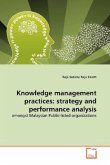The purpose of this study is to improve our
understanding of the role of stakeholders in a
strategic management context. More specifically, to
understand how the choice of stakeholders with whom
the firm should engage and how the use of various
strategic domains affect the generation of non-
economic competitive advantages. The results suggest
firms constrained by economic factors may pursue non-
economic competition through the leveraging of
political and social capital. A model relating
stakeholder inclusion to three forms of competitive
advantage is offered in addition to a typography and
classification system for stakeholder strategies.
Four metrics to measure stakeholder inclusion at the
business unit of analysis are also proposed. This
study validates stakeholder theory as it pertains to
the issues of inclusion and competitive advantage
and extends it to include non-economic methods of
enhancing firm performance. For corporate decision
makers, it offers a means of identifying, evaluating
and improving business strategy.
understanding of the role of stakeholders in a
strategic management context. More specifically, to
understand how the choice of stakeholders with whom
the firm should engage and how the use of various
strategic domains affect the generation of non-
economic competitive advantages. The results suggest
firms constrained by economic factors may pursue non-
economic competition through the leveraging of
political and social capital. A model relating
stakeholder inclusion to three forms of competitive
advantage is offered in addition to a typography and
classification system for stakeholder strategies.
Four metrics to measure stakeholder inclusion at the
business unit of analysis are also proposed. This
study validates stakeholder theory as it pertains to
the issues of inclusion and competitive advantage
and extends it to include non-economic methods of
enhancing firm performance. For corporate decision
makers, it offers a means of identifying, evaluating
and improving business strategy.








